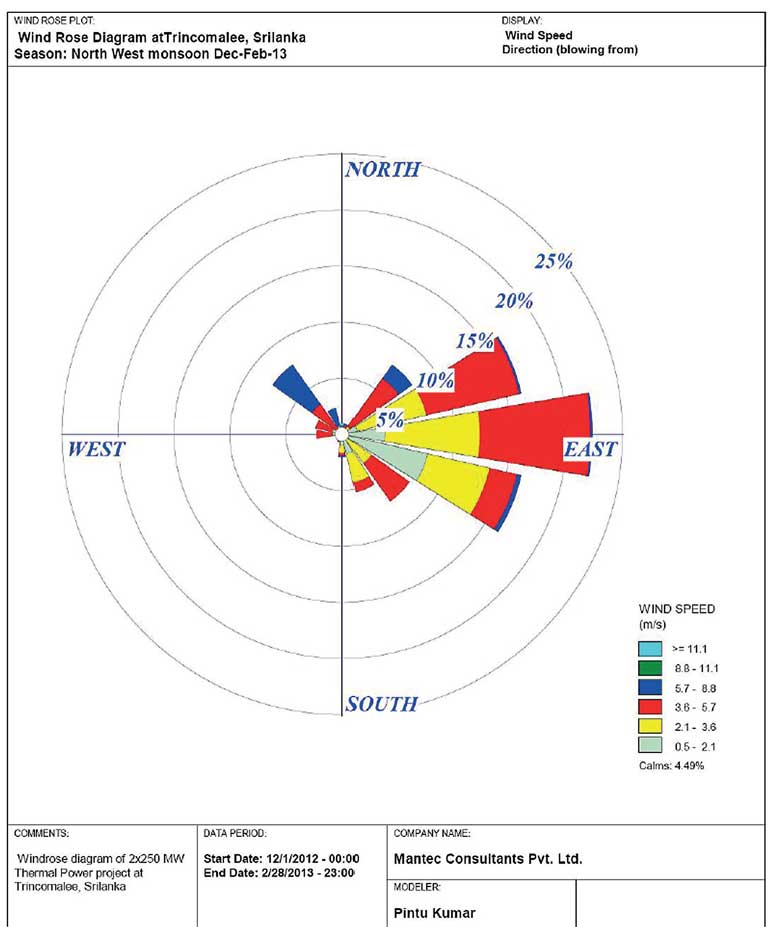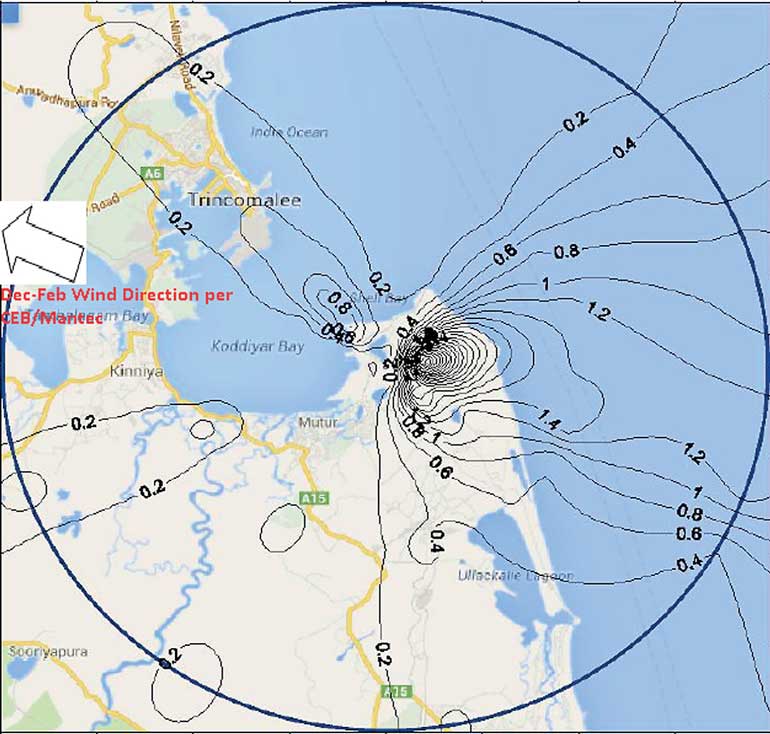Air Pollution in Sri Lanka
Air Pollution in Sri Lanka
Introduction: Air pollution is an under-appreciated concern and that the impacts of air pollution is poorly understood. Sri Lanka faces rapid rise in pollution from internal sources and from trans-boundary sources in the continent to the North. Air quality problems are increasing day by day due to the rapid rise in emissions of particulate matter and noxious gases from vehicular traffic, industrial emissions particularly from thermal power generation plants, rapid urbanization and trans-boundary transport of atmospheric contaminants from the Asia continent.
Particulate matter is the primary pollution of concern in Sri Lanka because it has consistently exceeded WHO guidelines. SO2 has shown increasing trends although they are still close to USEPA guidelines from 1997 to 2003. Annual NO2 levels, on the other hand, have consistently complied with WHO annual guidelines as well as annual USEPA limits.
Emissions from Transport:
Trends in energy consumption show increases in petroleum consumption compared with other renewable sources such as biofuels and hydropower. The country has also seen rapid motorization (e.g., doubling of motor vehicle fleet in one decade from 1991 to 2000). Sri Lanka’s Ministry of Environment estimated in 2011 that emissions from motor vehicles accounts for 55-60% of air pollution, while 20-25% is due to industries and 20% is from domestic sources. The number of vehicles too is rising and although recently emission testing has been mandated, the rise in emissions from 3-wheel auto-rickshaws has aggravated air quality, particularly in urban settings.
Emissions from Power Generation: The share of thermal power generation is increasing due to rising demand and reductions in generation by hydro-electricity due to the declining stream flow. Since 2011, there has been a rise in installation of electricity generation plants including a 900 MW coal power plant at Puttalam.
Impacts of Air Pollution: The impacts of the increasing air quality issues on the environment and climate are poorly understood. Preliminary studies on the impact of noxious gases and particulates on the atmospheric chemistry at ground level points to deleterious impacts on land and water quality. There are no studies on the impact of particulates on cloud formation and modulation of rainfall. The transboundary emissionsfrom the Asia continent to Sri Lanka is also becoming a significant source of pollution at higher elevations.
Monitoring and Mitigating Air Pollution: Managing the environmental impacts of transport systems and electric power generation are two defining challenges of contemporary times across the world as society tries to manage local atmospheric pollution and the global commons. There is a particular need for attention to air quality in tropical countries such as Sri Lanka as there is limited capacity to monitor air quality and implement mitigation steps. In Sri Lanka, industrialization and urbanization activities are centered on the coast of the Western Province comprising Gampaha, Colombo, and Kalutara districts. There is long-range transport of these pollutants into the mountains (which reaches an altitude of 2 km) as carried by the summer monsoon wind streams from April to October.
The focus on improved implementation and enforcement of laws and action plans should be a priority since implementation of previous action plans have been slow.
Air pollution from Coal Power Plants: A detailed accounts of the existing Coal power plant and the proposed plant are at
- Norachcholai
- Sampur
Norachcholai power plant
Sri Lanka’s first coal fired thermal power plant and the largest power station is implemented as a venture of Ceylon Electricity Board with the aid of EXIM Bank of the Republic of China. Located 100m inland from the shoreline, the construction was undertaken by the CMEC (China Machinery Engineering Corporation) and the total estimated cost of the project was USD 1.35 billion. The contract for the project was singed in 2006 and the first phase of the power plant, 300 MW was commissioned in 2011. The second phase completed adding another 300 MW in 2014 while the third phase added another 300 MW, making the total power generated through the Norochcholai power plant 900 MW. The first phase also included the construction of a 115km transmission line that connected the power plant to the national grid through the Veyangoda substation. A jetty that extended 4.2km into the ocean was also constructed. Nearby villages include Narakkalli and Penaiyadi on the Kalpitiya peninsula.
Sampur power plant
A second coal power plant was proposed as a joint venture of Ceylon Electricity Board and National Thermal Power Corporation (NTPC) of India. The Joint Venture Company has been incorporated as Trincomalee Power Company Limited on 6th September 2011. Trincomalee Power Company Limited was expected to be responsible for implementation and operation of the 2 X 250MW coal power plant in Sampur. The total estimated cost of the project was projected to be USD 512 Million.
The power generated will be transmitted to the national grid through high voltage transmission lines from Sampur through Habarana to the Veyangoda Grid Substations. A Power Purchase Agreement, Implementation Agreement, BOI Agreement, Land Lease Agreement and Coal Supply Agreement were signed on 07 October 2013 by the Government of Sri Lanka, Ceylon Electricity Board and JV Company. The Project was expected to be commissioned before end of 2017. However, due to flaws in its EIA in preventing environmental pollution, and objections from the public, the government decided to cease plans. This project though may be revived by a future government.
Assumptions and generalisations regarding wind and air pollution in the EIA.

Left: The ‘Windrose’ is a representation of which direction the wind comes from for December 2012 to February 2013. The distribution of wind speeds from each direction is shown in colour – Courtesy: Sampur EIA from Mantec.

Nitrous oxide pollution for Dec-Feb period as estimated by Mantec: The contours shows the peak concentration of nitrous oxides for a day due to the emissions. We inset an arrow to show the South-Easterly wind direction that the wind comes from according to the EIA. Notice, the contours with higher concentration is drawn towards the South-East – Source: Mantec EIA Report.
There are other causes for concern. Mantec has made the following inter-locking assumptions and generalisations:
(a) The wind measurements in Sampur represents the wind across the East: A better accounting of regional variation in wind is needed. There are variations due to location, storms, mountains and sea breeze. The sea-breeze and the desiccating mountain slope winds (“kachchan kaththa” in Tamil) that affects Sampur in a particular way.
(b) Wind observations at Sampur can be extrapolated to higher elevations: The CEB instrument does not reach the high elevations that the pollutants travel to. It is hard to capture the wind profile at higher elevations without observations. The assumptions in the software about the upper air should have been verified for our specific equatorial geography.
(c) One year of wind observations is enough: The wind varies substantially from year to year variation of wind in Sri Lanka. For example, in some years there are storms and even cyclones. In other years, the El Nino alters the wind flow. One just cannot use just one year of data to project for the next half century if serious.
(d) The past can represent the future: With decadal and climate change (which we have documented for Sri Lanka), one cannot assume that the past represents the future. The EIA does not address the risks posed by climate change such as more frequent intense rainfall, cyclones, sea level rise or changing wind and storm patterns all of it of relevance for Trincomalee.
These shortcomings could have been mitigated by making use of all available data, consulting past research, addressing inconsistencies and communicating what risks this analysis has not addressed.
Pollution concentrations on the ground according to the EIA
Anyway based on these data and assumptions, the Mantec model estimates dispersion of dust, nitrous oxides, sulphurous oxides and particulate matter under idealised conditions. For example, there are no plant breakdowns or accidental large releases. Essentially the model projects how much of the dust shall settle in the region surrounding the power plant. They limit their analysis to 20 km. The wind data for December to February largely blows from in-between the East and South-East.
The output from the Mantec model perplexes – for example, in the December to February period, the pollutants are carried towards the South-East and into the sea. In other words, the pollutants go against the wind. Nowhere on the earth’s surface is passive matter known to go against the wind.
In an attempt to validate the Mantec model results, the Industrial Technology Institute was contracted by Mantec to undertake similar simulations. The ITI model too relies on similar assumptions and generalisations. They too use only one year of wind data albeit from a climate model run in the US. Not enough information is given in the EIA for comparison across seasons. However, the patterns of dispersion of pollutants they project is misaligned with that from Mantec and the pollutant concentrations is several times that from Mantec. The EIA does not reconcile the discrepancies.
"Is the air pollution analysis for the Sampur Coal Plant credible?" Articles published by our foundation on Newspapers and web